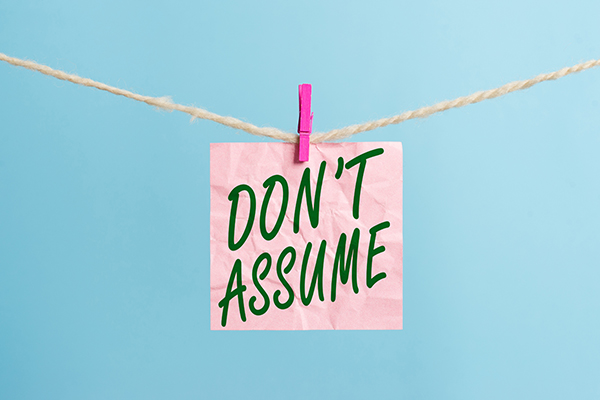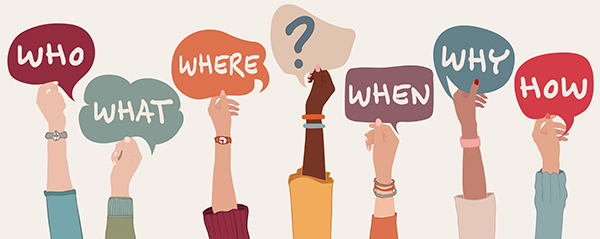As someone working in Learning and Development, what do you visualise when you consider the term accessibility? Is it ensuring we have our needs taken care of within the work we are doing and learning spaces we are in? Is it taking responsibility for providing that access for others? Or is it encouraging the people we work with to disclose their individual needs to us?
All three of these areas are crucial to ensuring training works for everyone. However thinking through accessibility can be daunting so I wanted to explore these areas with an expert. I was lucky enough to grab some time with Equity & Inclusion Trainer Zara Todd. During our chat Zara revealed insights on how we can all, as L&D professionals, training commissioners, HR specialists, providers, consultants and participants, take ownership in identifying what’s needed to enable an inclusive training environment. Read on to see what she had to say.
Yvette: Zara it’s lovely to see you again. Thanks for your time today and I’m really pleased we’ve got this opportunity to chat. Can we start with you sharing what accessibility actually means? when it comes to training, learning and development?
Zara: Hi Yvette it’s good to see you too and I’m happy to share my experiences. For people who might not know me, I’m an Equity and Inclusion specialist. I’m also a wheelchair user and I’m neurodivergent so understanding accessibility is vital in how I work. For me, this means having clear conversations about access needs and adapting approaches are part of every training. I also understand the frustration that people can feel when they are part of a learning opportunity and can’t access the learning they need. It’s really important to emphasise that there’s no such thing as fully accessible training. People have so many diverse needs that we have to be open to the complexities this can cause regarding disabilities. Accessibility is more of a mindset which involves thinking about all the different ways you can create a learning experience and share that information so that people don’t have to guess. Also, accessibility isn’t just about disabled people. There could be many reasons why someone might need something doing in a slightly different way. For example, someone might be unwell, have personal problems, they could be pregnant, menopausal or have caring responsibilities. This means those working in L&D should assume every training will have someone who needs some kind of adjustment. Most people who have access requirements might not be visibly in need, so I’d advise against making blanket assumptions.

Yvette: Can you explain a bit more about information sharing, as I’m thinking particularly of L&D commissioners who are often the point-of-contact between participants and providers. What do they need to communicate successfully when it comes to accessibility?
Zara: L&D commissioners can’t be expected to know of every access requirement of everyone attending a course, but they can be made aware of what the training will involve and what participants can expect. These details needs to be shared so people know what they’re coming into. This could be via briefing documents, videos or emails but it needs to include not just what the training is about, ie the content, but also what that experience will be: for example the kinds of activities involved, the materials provided, timescales for comfort breaks, how much discussion or sharing there will be and whether there’s likely to be any reading or prep work. These factors are really important. Two-way communication is key so as well as sharing information about what to expect, participants should be encouraged to share what their current needs are. It’s worth remembering that people attending training don’t have to justify why they need a space to be in a certain way; just that it’s required so they’re able to participate fully.
Yvette: I agree: being clear on what to expect and what the options are in a learning environment is really helpful for everyone. Similarly Zara, what guidance would you offer to suppliers to help them ensure inclusivity with their trainings?
Zara: I’d say ask questions. Don’t just assume your way of delivering is enough – find out if that’s the case in advance. That way you give people the opportunity to flag to you if they need something else. So ask the commissioner but also give participants a way to reach you directly if they want to. There are many reasons why someone might not want to tell an HR or L&D colleague about their needs, but they may be OK with telling the trainer directly. Then, if and when you are made aware that someone has a need or an adjustment, be willing to change. Don’t ignore it. It can be helpful to make sure you have options available – different ways of facilitating learning and delivering training readily available. You could have a pre-call to demonstrate what to expect, so that the participant can offer you feedback on that. Acknowledging that sometimes you won’t have all have the answers is also OK. What’s accessible for one event might not be suitable for the next. It can also be really helpful to showcase what supportive measures you’ve already put in place so that everyone’s informed and not just the people perceived as needing them. That way if someone hasn’t disclosed to you a need, they will see what is available. And it may also encourage them to get in touch.
Yvette: I’d also like to add that showcasing in advance what to expect from the training is an essential part of the training contract and this can support a more holistic experience for everyone. People can fear training, maybe they have had a bad experience in the past, or worry about having to speak up in front of others. If we can show how adaptable and safe the experience will be, then everyone can feel more comfortable. You also mentioned getting some of the basics right, what would your top tips be there?
Zara: There are lots of things you can consider on top of sending information in advance. Some of the key things I recommend are ensuring you have break times built in and you stick to them. You can add breaks or make them longer, but moving them can be really difficult for people who may need a comfort break or time out. Ensure your materials are simple, visual and easy to follow. Be prepared to send your slides or materials in advance – this is useful for all kinds of people; for example people who are neurodiverse or people who are visually impaired or deaf. Don’t have physical exercises that assume one kind of body type – have options instead. I’m pro-physicality as long as there’s a choice. For example, one time on a training course I had to sit out of an exercise because my wheelchair couldn’t navigate the space we were in and it was quite physical. I was made to feel very isolated. This was both frustrating and awkward. The whole thing could have been adapted to a sit down activity or at least allowed people to choose how to complete that activity. Have a break out space or room available – again for people who may need a time out or even a private conversation with you. And of course follow up – get feedback. Find out if your approach worked for everyone, and use feedback to keep adapting.

Yvette: This such a useful checklist: information, breaks, materials, space, activities and feedback. Is there anything else trainers could consider?
Zara: I come back to my point above – you can do a lot to share this information and adapt your approach, but you still might not get it 100% right for everyone. When I very visibly show up in spaces, people get very excited in telling me all the access adjustments they have for me and my wheelchair, and that is lovely but I might not be the only one that has access needs. So it’s useful to check in throughout the day: at the start ask if anyone needs any support or adjustments, give them options for how to share that. Online it could be a private message in the chat. In person, they could indicate they want a private conversation. Check in and ask for feedback after a little while – is this working for everyone? Does anyone want to recommend a change in the ground rules or ways of working. That way, if something isn’t working, participants can share it so that you can work together to resolve the issue.
Yvette: Absolutely– gaining agreement, feedback and repeating that cycle is useful for everyone. This encourages participants to speak up about their needs. Trainers might worry about this though – not being sure what to do when they have that information on the day – rather than in advance. So it becomes unplanned. What tips do you have for them in those moments?
Zara: Don’t panic! View these as learning moments. Finding new ways to improve your training is great, as this means it reaches more people. So when you are made aware of a need, or a need hasn’t been met, have an honest conversation. Find creative options together. You can do this by asking open questions, again not making assumptions. Things like: what has helped you before? What isn’t working for you now? Encourage communication but be practical too. For example I have had times when needs actually clash: memorably, I had a deaf participant with a BSL interpreter and blind participant with a support animal. The BSL interpreter had allergies and couldn’t be near the support animal which meant I had a clash of needs. Luckily I could put them far apart and I used a break out space. But if that wasn’t an option, I would have had a chat with everyone involved to work out together what would be a sensible, but not perfect, way forward. Also, as a trainer you can take a break to do this – work it out, phone a colleague, pause and regroup. It’s OK to re-jig the training on the day and take a time out. Just remember not to mess with the comfort breaks which you have already committed to.

Yvette: I love that advice: don’t panic! Do learn! Great tips Zara.
Zara: Thanks Yvette – as human beings we can’t be expected to know it all, but as providers and suppliers we do have a duty-of-care to ensure the people we’re training feel supported and valued.
If you would like a discussion on accessibility or your training needs for an =mc course, please get in touch online, call us on 020 7978 1516 or email yvette@managementcentre.co.uk.
If you want to find out more about Zara’s work on equity and inclusion, contact her here.